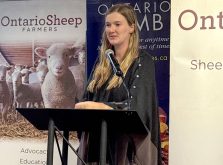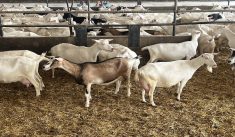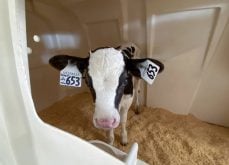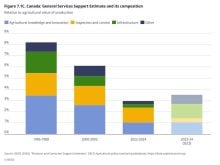Lactanet has identified the need for a breeding tool to quantify the risk that dairy cattle will develop the “crampy” neuromuscular disorder, thanks in part to research at the University of Guelph.
According to Lactanet chief services officer Brian Van Doormaal, the steps to make that happen “could easily take a few years so there’s no short-term solution envisioned.”
Why it matters: Cattle severely affected by crampy have difficulty eating, either sporadically or permanently.
Read Also
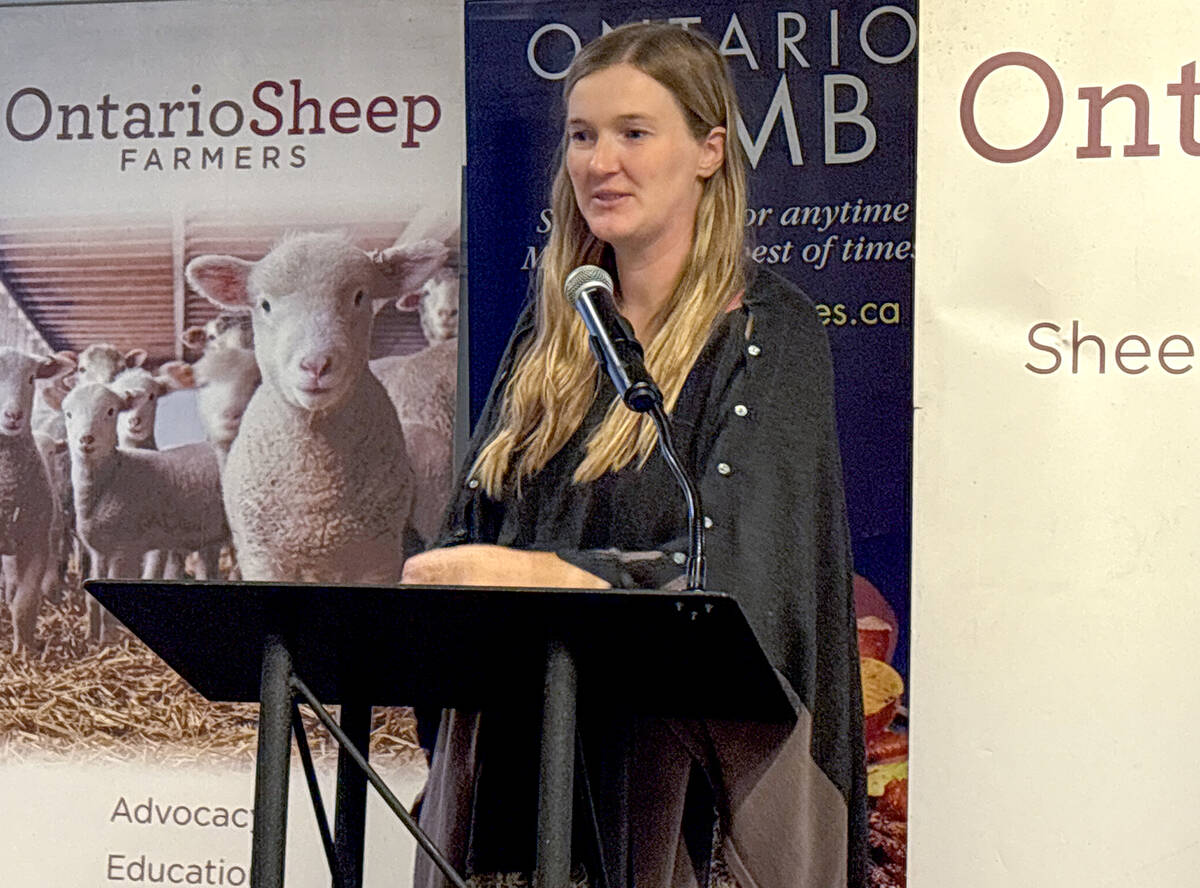
Footflats Farm recognized with Ontario Sheep Farmers’ DLF Pasture Award
Gayla Bonham-Carter and Scott Bade, of Footflats Farm, win the Ontario Sheep Farmers’ 2025 DLF Ontario Pasture Award for their pasture management and strategies to maximize production per acre.
The disorder has no cure and signs can appear in cattle at two to seven years of age, first as rear leg spasms or hyper-extension, which eventually spread to the entire body.
Lactanent has crampy on the agenda for its Oct. 7 Open Industry Session webinar. Attendees will hear an update on an initiative started in 2021 to estimate crampy’s prevalence on Canadian dairy farms.
A recently published article said the “one-time national ‘Crampy Data Collection Blitz’ encourage(ed) farmers across the country to submit their data on lactating cows that exhibit symptoms.”
Just over 800 herds participated between September 2021 and April 2022. Lactanet received information about 2,807 instances of probable crampy.
For registered Holsteins, 678 herds contributed to the data blitz, resulting in 1,952 cows with reported signs of crampy among 54,826 registered herd mates, more than 12,000 of which were genotyped.
This quantity of data allowed Lactanet to support a Master’s research project by U of G’s Gabriella Condello, which aimed to “assess the genetic component to see if genetic tools could be (part of) a mitigation strategy.”
Van Doormaal said a genetic component was identified before this study but environmental and management effects were also acknowledged. Getting a handle on the genetic component has been “a concern that breeders have expressed for many years,” he added, “especially when there are one or more ‘crampy’ sires being widely used.”
It is difficult to pin down the genetic component due to the subjective nature of assessing the disorder’s severity, inability to definitively declare a cow crampy-free due to the occasional incidence of late-onset positivity, and the fact that the disorder “is controlled by multiple genes and not a single gene,” said Van Doormaal.
“This means that we cannot hope for a single gene test, like for polled or other genetic conditions.”
He noted that “polygenic” origins for bovine characteristics are the norm rather than the exception. Milk, fat and protein yields as well as somatic cell, fertility and conformation traits all manifest through multiple genes, as do many other traits. This adds to the complexity of research by Condello, who is supervised by Dr. Christine Baes as part of the Centre for Genetic Improvement of Livestock.
Her work is ongoing but early analysis shows an estimated heritability of 6.8 per cent for crampy susceptibility. This, combined with an understanding of genetic and/or genomic evaluation and selection for all traits controlled by multiple genes, gave Lactanet the confidence to proceed with next steps to develop a breeding selection tool.
“The results of this study confirm and quantify the degree of genetic control contributing to crampy in dairy cattle,” said the Lactanet article. “It also highlights the opportunity for genomic selection; however, additional data is needed prior to the development of a national genetic evaluation system.”
Van Doormaal expects that “as a follow-up to this project … Lactanet will work with key industry partners to identify how a national data collection system could be developed and implemented. Once data on crampy is routinely collected in herds across Canada, then Lactanet geneticists would be able to develop and implement a genomic evaluation system to evaluate Holstein animals for crampy susceptibility.”
To register for the Oct. 7 webinar, which starts at 12:30 p.m., visit.






